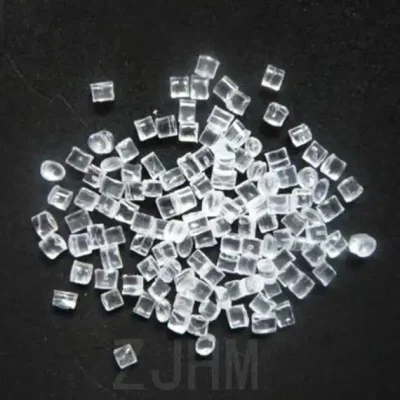-
Categories
-
Pharmaceutical Intermediates
-
Active Pharmaceutical Ingredients
-
Food Additives
- Industrial Coatings
- Agrochemicals
- Dyes and Pigments
- Surfactant
- Flavors and Fragrances
- Chemical Reagents
- Catalyst and Auxiliary
- Natural Products
- Inorganic Chemistry
-
Organic Chemistry
-
Biochemical Engineering
- Analytical Chemistry
-
Cosmetic Ingredient
- Water Treatment Chemical
-
Pharmaceutical Intermediates
Promotion
ECHEMI Mall
Wholesale
Weekly Price
Exhibition
News
-
Trade Service
Molex, a global leader in electronic components, announces rugged backplane cable assemblies for defense and aerospace contractors looking to provide high-speed data transfer between commercial backplanes or server and commercial off-the-shelf (CTOS) connectors, including Impact, Impel, VHDM or fully military-quality interfaces
.
Custom backplane cables have undergone extensive engineering testing to ensure they meet their specific data rate and performance requirements and are designed to plug in a wide range of rugged connectors
.
.
Custom backplane cables have undergone extensive engineering testing to ensure they meet their specific data rate and performance requirements and are designed to plug in a wide range of rugged connectors
.
Mark Joseph, Business Development Manager at Molex, said: "Expanding communications capabilities and increasing data processing rates through modern technology is a fundamental goal
for the U.
S.
Department of Defense and aerospace contractors.
However, these customers want to be able to increase data rates without incurring the high system redesign costs
of using optical solutions.
Molex's rugged backplane cable assemblies address this challenge by adopting a rugged and reliable construction that not only increases data rates between the server and rugged input/output connectors, but also provides a variety of interconnect options and performance ranges
.
”
for the U.
S.
Department of Defense and aerospace contractors.
However, these customers want to be able to increase data rates without incurring the high system redesign costs
of using optical solutions.
Molex's rugged backplane cable assemblies address this challenge by adopting a rugged and reliable construction that not only increases data rates between the server and rugged input/output connectors, but also provides a variety of interconnect options and performance ranges
.
”
Molex launches and backplane cable assemblies for aerospace applications
These cable assemblies reduce the high transmission losses caused by long trace distances on the board and provide a data throughput range
of 2 to 25Gbps depending on the configuration.
The optional metal housing provides 360° electromagnetic interference (EMI) shielding and reduces crosstalk from the connector for improved system performance
.
Self-latching features help secure connections under vibration or shock conditions, and provide an easy-to-use, intuitive squeeze-and-pull mechanism, blind mating allows for deviations, and provides "floating" between mating surfaces
of 2 to 25Gbps depending on the configuration.
The optional metal housing provides 360° electromagnetic interference (EMI) shielding and reduces crosstalk from the connector for improved system performance
.
Self-latching features help secure connections under vibration or shock conditions, and provide an easy-to-use, intuitive squeeze-and-pull mechanism, blind mating allows for deviations, and provides "floating" between mating surfaces
Molex, a global leader in electronic components, announces rugged backplane cable assemblies for defense and aerospace contractors looking to provide high-speed data transfer between commercial backplanes or server and commercial off-the-shelf (CTOS) connectors, including Impact, Impel, VHDM or fully military-quality interfaces
.
Custom backplane cables have undergone extensive engineering testing to ensure they meet their specific data rate and performance requirements and are designed to plug in a wide range of rugged connectors
.
.
Custom backplane cables have undergone extensive engineering testing to ensure they meet their specific data rate and performance requirements and are designed to plug in a wide range of rugged connectors
.
Mark Joseph, Business Development Manager at Molex, said: "Expanding communications capabilities and increasing data processing rates through modern technology is a fundamental goal
for the U.
S.
Department of Defense and aerospace contractors.
However, these customers want to be able to increase data rates without incurring the high system redesign costs
of using optical solutions.
Molex's rugged backplane cable assemblies address this challenge by adopting a rugged and reliable construction that not only increases data rates between the server and rugged input/output connectors, but also provides a variety of interconnect options and performance ranges
.
”
for the U.
S.
Department of Defense and aerospace contractors.
However, these customers want to be able to increase data rates without incurring the high system redesign costs
of using optical solutions.
Molex's rugged backplane cable assemblies address this challenge by adopting a rugged and reliable construction that not only increases data rates between the server and rugged input/output connectors, but also provides a variety of interconnect options and performance ranges
.
”
Molex launches and backplane cable assemblies for aerospace applications
These cable assemblies reduce the high transmission losses caused by long trace distances on the board and provide a data throughput range
of 2 to 25Gbps depending on the configuration.
The optional metal housing provides 360° electromagnetic interference (EMI) shielding and reduces crosstalk from the connector for improved system performance
.
Self-latching features help secure connections under vibration or shock conditions, and provide an easy-to-use, intuitive squeeze-and-pull mechanism, blind mating allows for deviations, and provides "floating" between mating surfaces
of 2 to 25Gbps depending on the configuration.
The optional metal housing provides 360° electromagnetic interference (EMI) shielding and reduces crosstalk from the connector for improved system performance
.
Self-latching features help secure connections under vibration or shock conditions, and provide an easy-to-use, intuitive squeeze-and-pull mechanism, blind mating allows for deviations, and provides "floating" between mating surfaces







